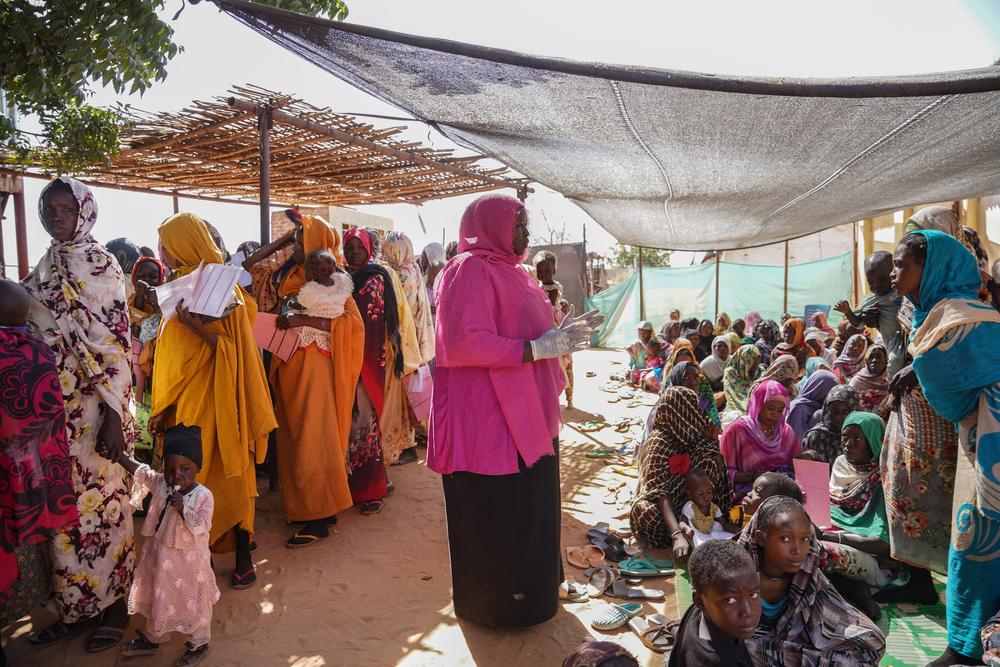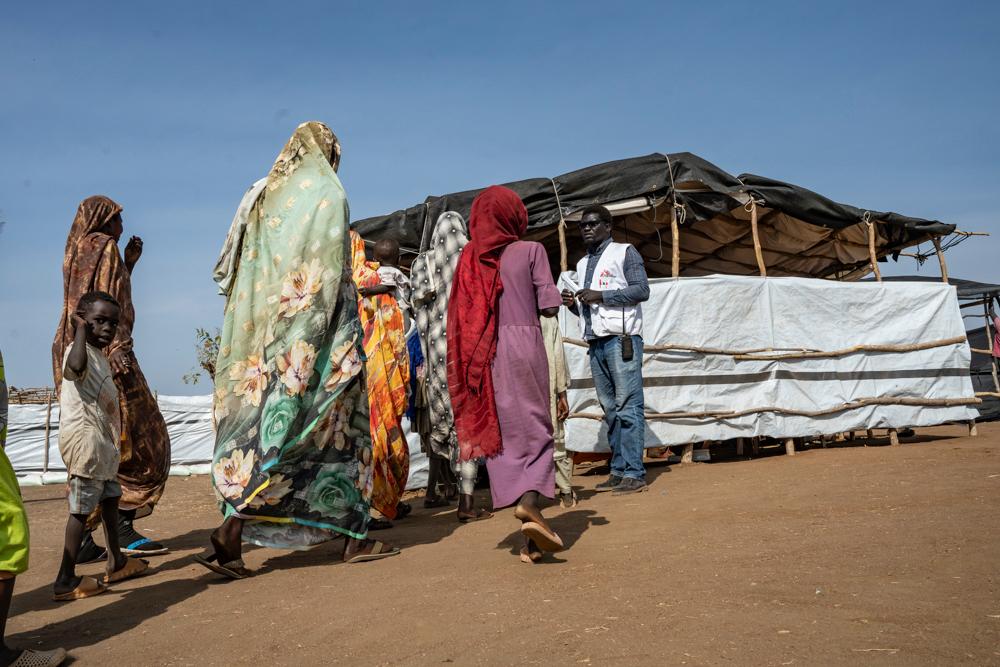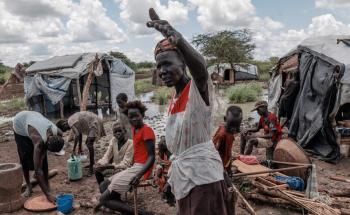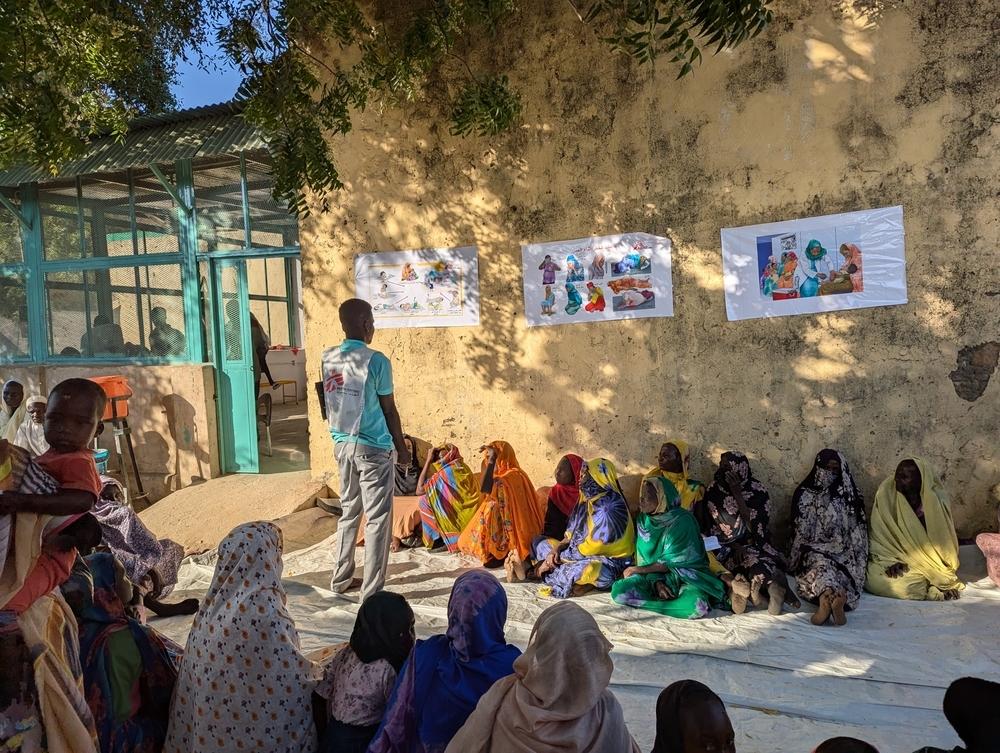Doctors Without Borders (MSF) has been forced to stop outpatient treatment for 5,000 children with acute malnutrition in the Zamzam displacement camp in North Darfur, Sudan, because the warring parties have blocked deliveries of food, medicines and other essential supplies for months.
As supplies ran low at the end of September, MSF was forced to stop care for 5,000 children on an outpatient basis, including 2,900 children with severe acute Malnutrition in Sudan. Only MSF's 80-bed hospital remains functioning in the camp to treat children at the most significant risk of dying.
"There is an urgent need for a massive supply of nutritional products and food to help the population, which is currently in a catastrophic situation," said Michel-Olivier Lacharité, MSF head of emergency operations. "MSF is calling on the various stakeholders, the governments, the allies of the parties to the conflict, the Rapid Support Forces, the Sudanese Armed Forces and the Joint Forces, to facilitate humanitarian aid delivery to the camp."
There is an urgent need for a massive supply of nutritional products and food to help the population, which is currently in a catastrophic situation.Michel-Olivier Lacharité, MSF head of emergency operations

Some limited supplies have arrived recently, including medical supplies that MSF could transport. Still, the quantities remain far too low to meet the needs of the approximately 450,000 people suffering from malnutrition in the Zamzam camp.
The crisis has attracted broader international attention as the IPC Famine Review Committee concluded in August that a famine was underway in the Zamzam camp.
MSF's own malnutrition assessments found that 30 per cent of children were malnourished in multiple surveys earlier this year, estimating that a child was dying of causes linked to malnutrition every two hours on average. As the current crisis also limits MSF's ability to collect new data, the current rate of death among children is not known.

Malnutrition in Sudan Zamzam camp
"In the last few days, we've seen some positive signs, with trucks arriving after months of almost complete blockade around the camp. However, these quantities are insufficient," Lacharité said. "These are positive signs, and we can see that the parties to the conflict recognize the seriousness of the situation and are starting to let trucks arrive. If we are to have a massive response, the aid agencies will also have to significantly step up their efforts and all diplomatic stakeholders negotiating with the parties to the conflict will have to convince them to ensure that this delivery continues over the coming months."
For example, providing a month's worth of emergency food rations (i.e. around 500 calories a day per person) to the 450,000 people in Zamzam represents around 2,000 tons of rations. It would take 100 lorries a month to deliver them.
Supply blockade issues force us to stop caring for 5,000 malnourished children in Zamzam camp, North Darfur. Outpatient nutritional care was a key lifesaving activity of our medical project, and stopping it will inevitably have devastating consequences for children. Our teams in Zamzam are still running an 80-bed hospital with an intensive therapeutic feeding unit to treat children at the greatest risk of dying.
In such a dire situation, MSF should be scaling up its medical response. Instead, running critically low on supplies, we were forced to reduce our services in recent months to focus solely on children in the most severe condition. We had to suspend treatment in August for the less severe forms of malnutrition, who represented an active cohort of 2 700 children, and to put an end in September to consultations provided to adults and children over five years old. Today we are stopping all nutritional outpatient activities, including children under five years old with severe acute malnutrition. This means 5,000 children followed by our medical teams, including 2 900 with severe acute malnutrition, are no longer being cared for. These children were only a fraction of those in need of lifesaving nutritional treatment in the camp where our survey and screenings indicated that 30 percent of children are acutely malnourished.
During an MSF's nutrition and mortality assessment carried out in January this year, we found alarmingly high malnutrition and mortality rates, with almost 25% of GAM and 7% of SAM and a mortality rate of 2.5 per 10,000 people per day. Based on these findings, we estimated that a child was dying of causes linked to malnutrition every two hours on average. We followed the assessment with a mass nutrition screening (63,000 people) in March and April, which confirmed our findings (29% GAM, 8% SAM) well above the alert threshold of WHO for critical emergencies.
More recently, we screened 29,000 children under five years old during a vaccination campaign and found increasing malnutrition prevalence: 34% GAM and 10% SAM.
The malnutrition rates found during the screening are massive and likely some of the worst in the world currently. It’s even more terrifying, as we know from experience, that the results are often underestimated in this area when we use only the mid-upper arm circumference criteria, as we did here, instead of combining it with measuring [children’s] weight and height.
As the current crisis with escalating fighting and blockade on supplies also limits MSF's ability to collect new data and run mass activities, we have not been able to re-evaluate the mortality rates in the camp. Yet what’s for sure is that severe acute malnutrition is a life-threatening condition that requires timely treatment to avoid a fatal outcome and that leaving behind thousands of malnourished children without access to treatment in Zamzam camp is a death sentence.
As of the end of September, there were around 40 patients in the 25-bed intensive therapeutic feeding centre (bed occupancy rate of 160%).
Most supply roads are controlled by the Rapid Support Forces (RSF) who have made it all but impossible to bring therapeutic food, medicines, and essential supplies into the camp since the intensification of fighting around El Fasher in May. After months of almost complete blockade, we have seen positive signs in recent days with a handful of trucks arriving, but the quantities are vastly insufficient.
The two trucks, which left eastern Chad with MSF supplies intended for our medical programs in Zamzam and El Fasher and had been stuck in Kabkabyia since July 2, proceeded to Tawila on September 25. We are currently evaluating the humanitarian and medical situation.
Some limited supplies have arrived in Zamzam camp in recent days, including medical supplies that MSF was able to transport, but the quantities remain far too low to meet the needs of the approximately 450,000 people suffering from malnutrition there.
Despite hopeful announcements following peace talks in Geneva in mid-August, no significant amount of humanitarian aid has reached people in Zamzam camp since then.
Some limited supplies have arrived in recent days, including medical supplies that MSF was able to transport, but the quantities remain far too low to meet the needs of people suffering from malnutrition in Zamzam camp, which has a population of approximately 450,000.
For example, providing a month's worth of emergency food rations (i.e. around 500 calories a day per person) to the 450,000 people in Zamzam represents around 2,000 tons of rations. It would take 100 trucks a month to deliver them. To provide food rations with around 2000 calories a day per person, it would take 400 trucks a month.
We are assessing the medical and humanitarian situation in Tawila, North Darfur, after reports of critical health situation and mass displacement. People leaving El Fasher to escape heavy clashes and hunger find in Tawila a place where security may be better but food and health services remain extremely scarce.
MSF is calling on all international stakeholders involved in negotiating broader humanitarian access, the governments, the allies of the parties to the conflict, the Rapid Support Forces, the Sudanese Armed Forces and the Joint Forces, to facilitate humanitarian aid delivery to the camp. If we are to have a massive response, the aid agencies will also have to significantly step up their efforts.
All options must be explored to quickly deliver food and supplies to the camp. If safe road passages for the delivery of humanitarian aid are out of reach, other exceptional and last resort options such as air drops must be considered – the urgency to act requires it.
MSF no longer runs medical activities inside El Fasher where the daily shelling, bombing and fighting have turned the lives of people into a nightmare and left many health facilities out of service. When possible taken into account our supply challenges, we support the Ministry of health staff with donations.



